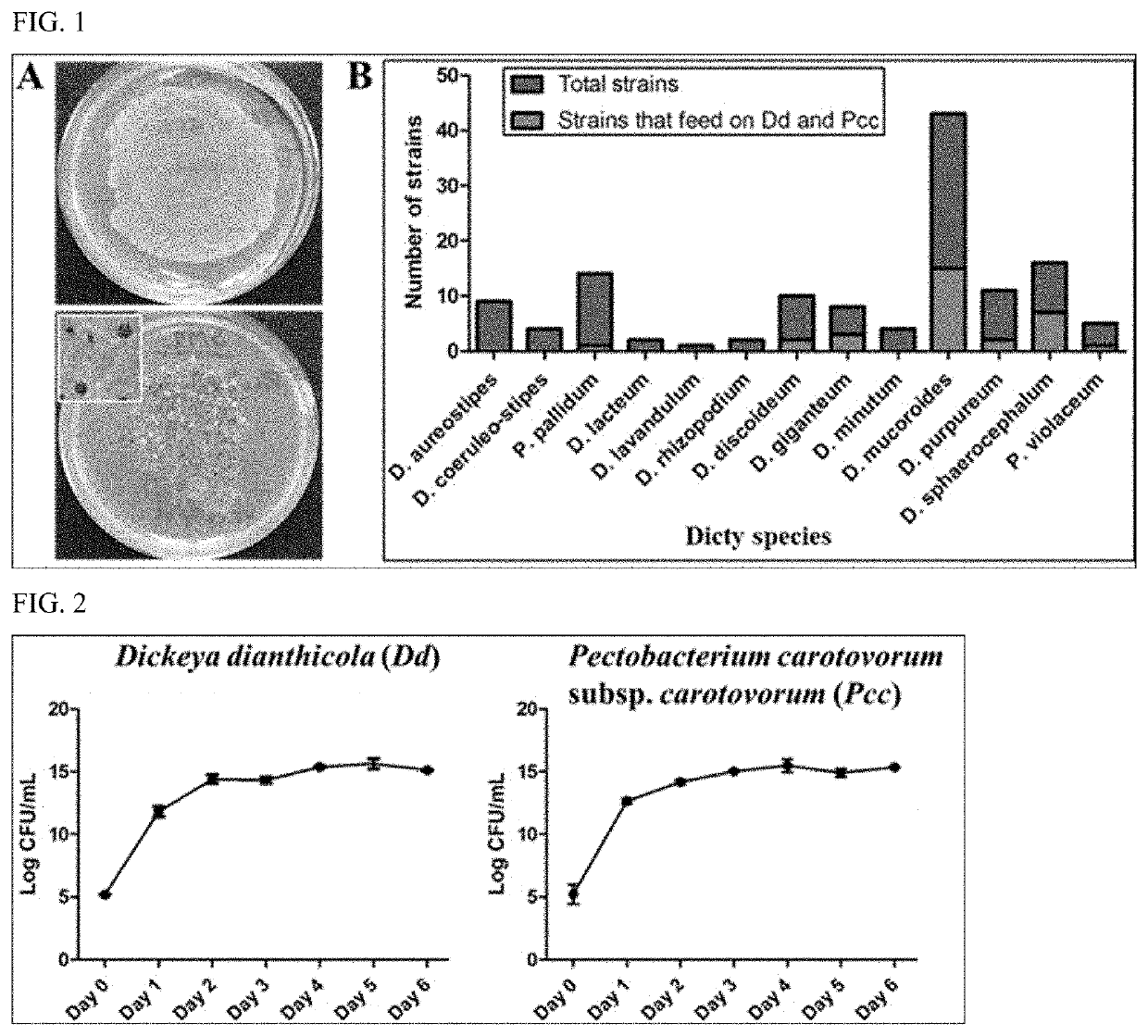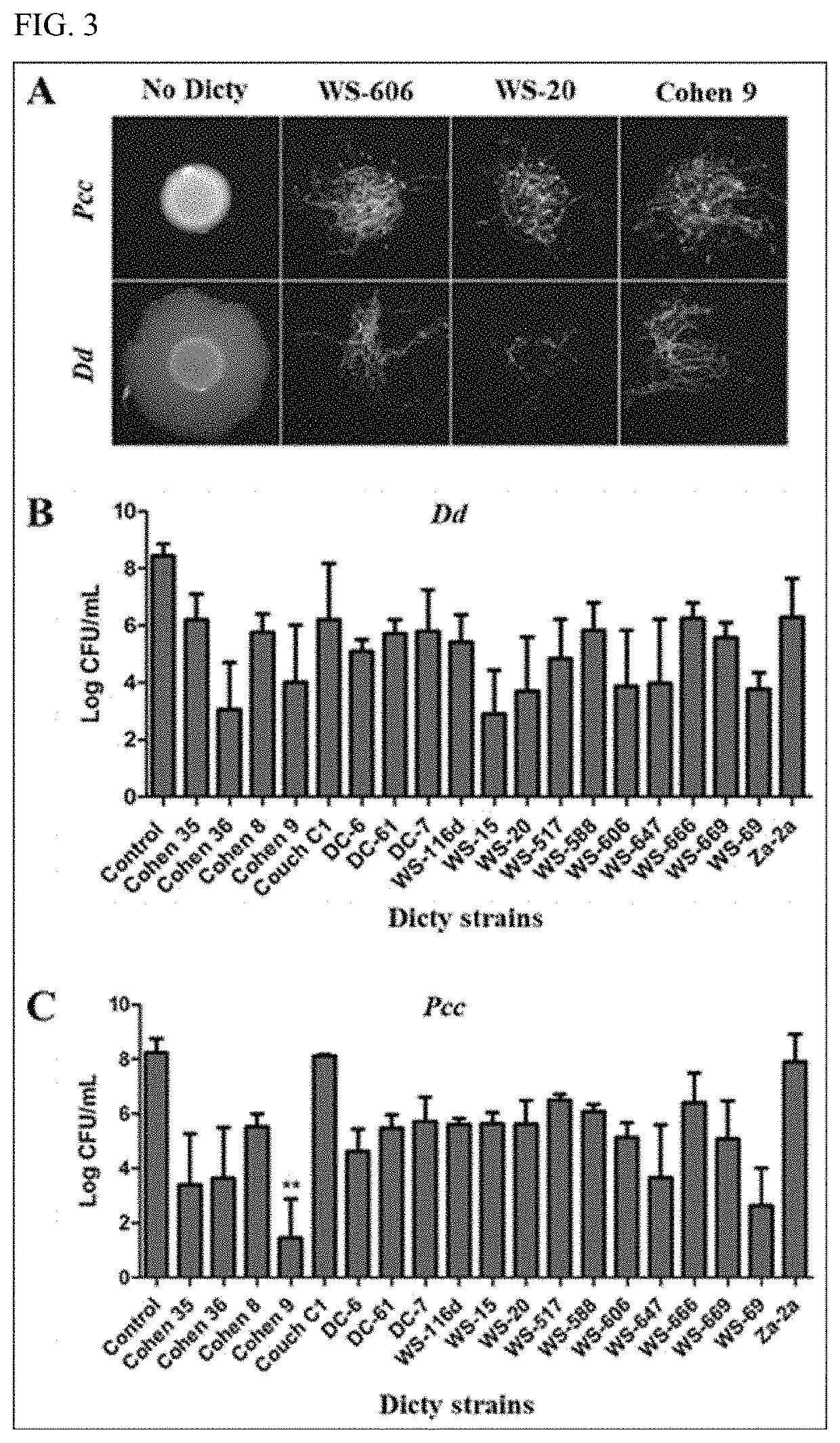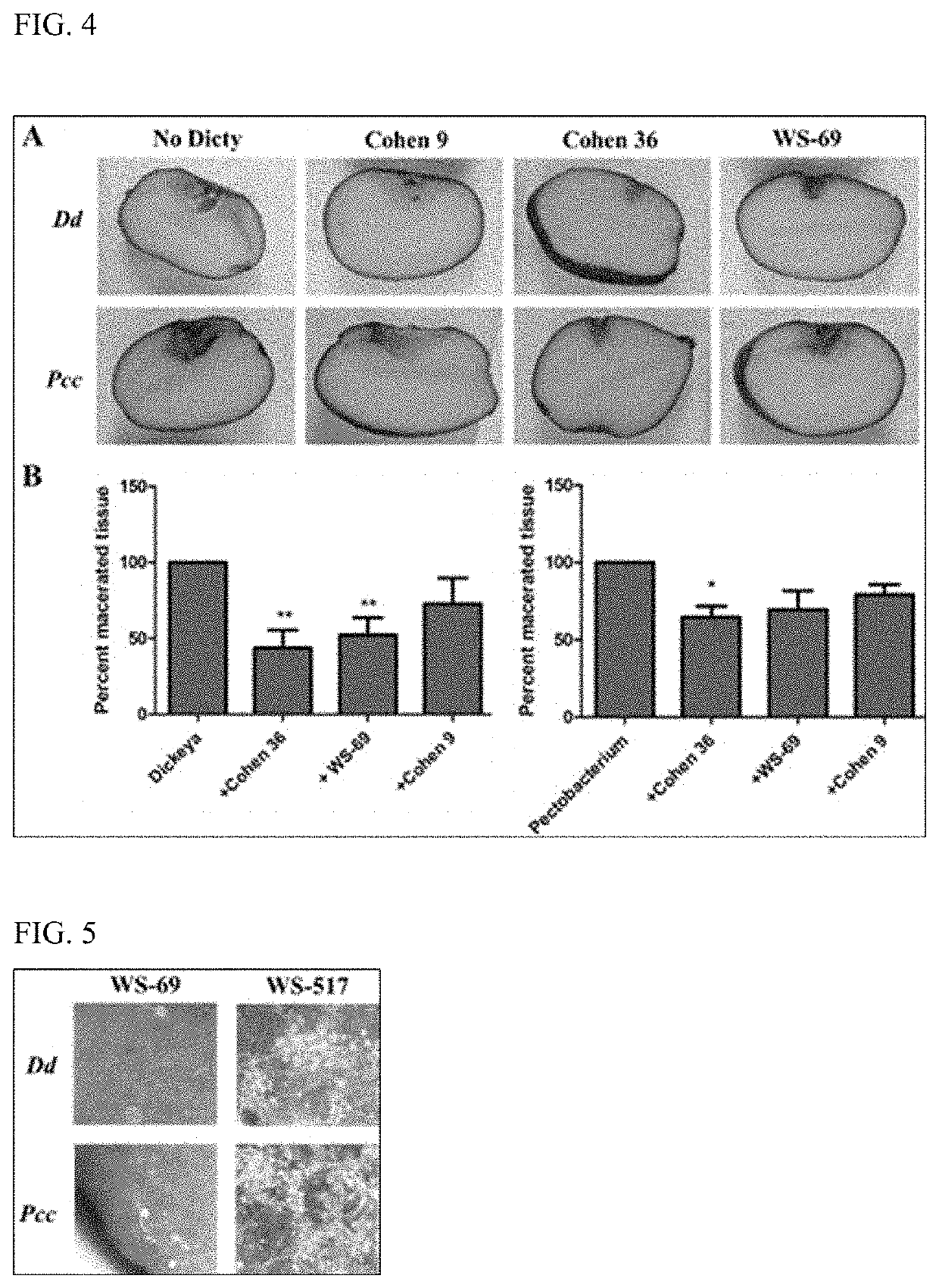Therapeutic amoeba and uses thereof
- Summary
- Abstract
- Description
- Claims
- Application Information
AI Technical Summary
Benefits of technology
Problems solved by technology
Method used
Image
Examples
example 2
ughput Screen
[0084]This example describes the use of a high throughput screening assay to identify Dicty strains from Alaska (e.g., BAC10A, BAF6A, BAC3A, NW2, KB4A (ATCC® MYA-4262™) SO8B, SO3A, BAF9B, IC2A (ATCC® MYA-4259™), AK1A1 (ATCC® MYA-4272™) PBF4B (ATCC® MYA-4263), PBF8B, BSB1A, SO5B (ATCC® MYA-4249), PBF3C, PBF6B, NW2B, NW10B (ATCC® MYA-4271™), PBF9A, IC5A (ATCC® MYA-4256TH), ABC8A (ATCC® MYA-4260), NW16B, ABC10B, ABB6B (ATCC® MYA-4261), BA4A (ATCC® MYA-4252), AKK5A, AKK52C, HP4 (ATCC® MYA-4286), HP8 (ATCC® MYA-4284), or NW9A) that feed on Dd and Pcc at 10° C. on potatoes.
[0085]Results from 11 Dicty strains screened against Dd at 10° C. are presented in FIG. 6. Data was analyzed for significance using a one-way analysis of variance (ANOVA; alpha =0.05) with Tukey's honest significant difference (HSD) test to compare means between the treatments and the No Dicty control. A reduction in Dd proliferation when potato discs were treated with Dicty strains Cohen 9, Cohen 36, WS-15...
example 3
n of Spores
[0087]This example describes methods for producing spores of Dicty. While Dicty can feed as single-celled amoeba in liquid culture, they are unable to form sporangia and produce spores unless a solid support is present (39). This means that liquid fermentation methods are unsuitable for mass production of Dicty spores. Instead, solid-state fermentation is utilized in which Dicty grow in the presence of E. coli on a solid support. This method of fermentation has been utilized for centuries in Asian regions for the production of fermented foods such as soy sauce, tempe, koji, and Japanese rice wine (77). Simply defined, solid-state fermentation is the cultivation of microorganisms on the surface of absorbent solid materials that provide enough moisture to maintain microbial growth but limit free-moving water (77, 78).
[0088]In an exemplary production method for production of Dicty spores, vermiculite is used as a solid support. Vermiculite is a hydrous phyllosilicate mineral...
example 4
on
[0092]This example describes methods for lyophilization, rehydration, and formulation of compositions comprising Dicty Spores.
[0093]Lyophilization has been shown to be a robust method for long-term storage of viable Dicty spores (39, 41). It is a widely used method for preserving microbial pesticides that makes long-term storage, distribution, and application feasible for treatments that are often less stable than their chemical counterparts (80, 81). Lyophilization preserves living microorganisms by freezing and dehydrating them through sublimation of ice in a vacuum. While lyophilization has been proven effective for long-term storage of many bacteria, yeast, and sporulating fungi, it is a harsh process that can significantly reduce sample viability if stabilizers are not employed (82). Non-fat skim milk (NFSM) has long been used as an effective stabilizer during lyophilization of yeast and fungal spores especially when used in combination with other sugars (80, 83, 84). In addi...
PUM
 Login to View More
Login to View More Abstract
Description
Claims
Application Information
 Login to View More
Login to View More - R&D Engineer
- R&D Manager
- IP Professional
- Industry Leading Data Capabilities
- Powerful AI technology
- Patent DNA Extraction
Browse by: Latest US Patents, China's latest patents, Technical Efficacy Thesaurus, Application Domain, Technology Topic, Popular Technical Reports.
© 2024 PatSnap. All rights reserved.Legal|Privacy policy|Modern Slavery Act Transparency Statement|Sitemap|About US| Contact US: help@patsnap.com










